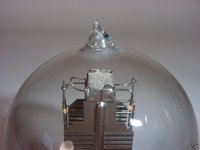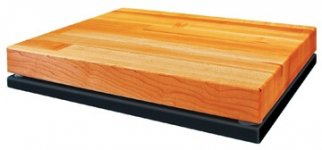from the same site,
much more interesting-
http://www.g8wrb.org/useful-stuff/ebay-auctions/bad-amplifier.pdf
much more interesting-
http://www.g8wrb.org/useful-stuff/ebay-auctions/bad-amplifier.pdf
Attachments
Attachments
MJL21193 said:Ah! Le Professional! Now I am interested! SSSSnoreeee....
Leave Léon alone! 😀
Cloth Ears said:
Leave Léon alone!
a wise idea!
An externally hosted image should be here but it was not working when we last tested it.
Attachments
MJL21193 said:Speaker cables are another story. They don't need shielding, they just need to have low impedance.
Actually, there is an argument for shielding loudspeaker cables. Most amplifiers have global feedback to tidy up distortion, lower output resistance etc. Or, to put it another way, amplifiers with global feedback have an aerial (the loudspeaker cable) connected to the input stage. To ensure stability, the feedback resistor usually has a capacitor across it, coupling the aerial rather well.
EC8010 said:
Actually, there is an argument for shielding loudspeaker cables.
The point is there's an argument for everything. Shielding is not much more expensive. If you think it helps, do it.
I have a subwoofer that has two 18" drivers, wired for 4 ohms. This is driven by a homemade 500 watt amp, eq'ed by a Linkwitz transform. When I watch a movie at good volume😀 , that sub is using all of that power (on transients). In a hurry to hear it when it was done, I grabbed the first thing handy: my trusty 18 gauge lamp cord. It works fine. Why? It's only 6' of wire. My DMM doesn't read low enough to measure the resistance.
It's still there. I've no reason to change it, it performs perfectly and introduces no noise (that I or anyone else can hear).
Try that same thing with an "audiophile" 500W amp and you might find a difference. That's why I won't use anything exotic to drive my subs; the ancient Adcom 555 I have for my subs works just fine with whatever Home Depot wire I throw at it.
SY said:... works just fine with whatever Home Depot wire I throw at it.
That's where I got my 100' roll of lamp cord.
So, what you are saying is that in the pusuit of the golden sound, amp manufacturers leave out components in the signal path that promote stability? Who would have guessed?😉
Halcro, Musical Fidelity, Pass and plenty others, even the Adcom 555s (ironically in its day the stereotypical budget hi-watt 'audiophile' amp) handle those loads without issue. Wide generalizations are of little value. While it's accurate to say the realm of audiophile amps includes models that do choke on such a load, it's not to call it a defining feature of the class.
MJL21193 said:
That's where I got my 100' roll of lamp cord.
So, what you are saying is that in the pusuit of the golden sound, amp manufacturers leave out components in the signal path that promote stability? Who would have guessed?😉
With all due modesty, I believe that I'm the one who started the underground rumor about Home Depot orange wire. Heh, heh, heh.
It goes well beyond just leaving out components. There is out and out bad design, and even more often, design without engineering. I have many horror stories about high end amps I've worked on. Evidently, many designers (not all, rdf!) aren't really engineers, but are ex-salesmen, dentists, pilots, marketing consultants, what-have-you.
I remember a VERY high end tube amp designed by a good engineer that was crippled by the addition of an RC network (done by the company that was responsible for sales and distribution of the product, not by the engineer or the manufacturer), which caused severe slewing problems and an inability to meet its power specs above a few kHz.
rdf said:Halcro, Musical Fidelity, Pass and plenty others, even the Adcom 555s (ironically in its day the stereotypical budget hi-watt 'audiophile' amp) handle those loads without issue. Wide generalizations are of little value. While it's accurate to say the realm of audiophile amps includes models that do choke on such a load, it's not to call it a defining feature of the class.
Agreed. Maybe money could be diverted away from such expensive shielded cables, and spent on well designed amps that don't have stability problems or ground loop issues, or high susceptibility to EM or RF interference.
rdf: There is a member(KBK ) posting on this thread:
http://www.diyaudio.com/forums/showthread.php?s=&threadid=100194&perpage=10&pagenumber=3
Who is selling cable with secret properties for $13000 US that will:
"...make their socks roll up and down and make silly putty run out of their nose. And that is an understatement. I gave a set to a friend who runs a high end shop, and sells the best cables that money can buy. He signed a non-disclosure agreement. Then I told him what the wire was. It was such a mindblower, he literally dropped the phone. For the time being - it is withheld from the market. The high end shop friend, says they are equal to or better than the best available. But they will be at half the price."
All of the original members of The Who would have to be inside that cable to be worth that much.😉
SY said:I was quite careful not to, you may observe.
Just watching your back. The missing 'some' qualifier is certain to be mis-interpreted in such a loaded context as an 'audiophool' discussion.
"All of the original members of The Who would have to be inside that cable to be worth that much."
Given the latest Keith Richards rumour, anything's possible. 😉
rdf said:
Given the latest Keith Richards rumour, anything's possible. 😉
Good one. Use of silver cable shielding as a snorting straw is generally not recommented(braiding will tangle nose hairs)

Here's one of my favourites. I ran across this a couple years ago. Item is an isolation platform to "tune" each component in your system.:
"Many designers feel wood (particularly Maple) offers a certain richness that enhancers harmonic structure. It has become a popular material. Winston Ma felt that while Maple (Ebony was his first choice, but far too expensive) was a good basic material for a platform, on its own it did not fully address the issue of vibration and resonance control. His experiments led him to marry the richness of Maple with the speed of roller ball technology.
His roller bearing design is unique in regards to the choice of materials. The load bearing pucks are brass, coated with hardened white steel. A stainless steel or tungsten carbide bearing is employed. The pucks are recessed into the wood for intimate contact
The FIM Isolation Base has worked exceptionally well here. In fact, I’d have to say it is one of the best products of its type I have encountered. They capture sense of the speed, attack and detail we’ve come to expect from roller bearing technology, but without the hard or metallic character some associate with this technology. Maple alone can, in many systems, tend to take things too far in the direction of warmth; roller bearing devices may move too far the opposite direction. The marriage of the two seems to be synergistic."
A bargan at $325.00 each
"Many designers feel wood (particularly Maple) offers a certain richness that enhancers harmonic structure. It has become a popular material. Winston Ma felt that while Maple (Ebony was his first choice, but far too expensive) was a good basic material for a platform, on its own it did not fully address the issue of vibration and resonance control. His experiments led him to marry the richness of Maple with the speed of roller ball technology.
His roller bearing design is unique in regards to the choice of materials. The load bearing pucks are brass, coated with hardened white steel. A stainless steel or tungsten carbide bearing is employed. The pucks are recessed into the wood for intimate contact
The FIM Isolation Base has worked exceptionally well here. In fact, I’d have to say it is one of the best products of its type I have encountered. They capture sense of the speed, attack and detail we’ve come to expect from roller bearing technology, but without the hard or metallic character some associate with this technology. Maple alone can, in many systems, tend to take things too far in the direction of warmth; roller bearing devices may move too far the opposite direction. The marriage of the two seems to be synergistic."
A bargan at $325.00 each
Attachments
I remember a VERY high end tube amp designed by a good engineer that was crippled by the addition of an RC network (done by the company that was responsible for sales and distribution of the product, not by the engineer or the manufacturer), which caused severe slewing problems and an inability to meet its power specs above a few kHz.
AN?
Here's one of my favourites. I ran across this a couple years ago. Item is an isolation platform to "tune" each component in your system.
A lot of the drivel written by journalisits about the magical properties of supports has greatly saddened me.
While good supports can, and do often provide quite audible improvments over rickety domestic furniture, the recommendation of one particular type as a panacea (which is most often the case) for all types of audio equipment is just plain irresponsible.
Different items of audio gear have different vibrational issues associated with them: different modes, different fequencies; external vibration verus operational vibration. Supports offer two potential benefits: (i) they can isolate the component from external vibration, and (ii) they may provide a sink to provide a 'ground' for vibration caused by operation of the component. What works at ameliorating one set of vibrational issues is highly unlikely to be effective in a totally different set of circumstances.
Having said that, placing a turntable or tube amp on a large piece of furniture with multiple surface areas capable of picking up large amounts of airborne vibration and feet connected wobbly floorboards is hardly conducive to good sound. It will probaby provide a wide and complex range of vibrational feedback comprising mutiple modes and frequencies. Placing the equipment on a small support, with reduced surface area and more rigid construction, will probably reduce the magnitude of vibrational feedback and push it higher up the spectrum. In instances like these, it is no surprise that a significant difference or improvement in sound is perceived.
But to then extrapolate this finding and say that support x has a certain intrinsic sound is nonsense. It is always the combination of the properties of the support and those of the associated piece of equipment that produces the final result.
Some time ago I upgraded CD players. The old unit was very sensitive to placement, and after much experimentation I arrived at a home made support arrangement I was happy with. When the new unit arrived it was placed on the same surface. However, when cleaning it was temporarily moved to different piece of furniture. Being lazy after wielding the duster, I fired it up where it sat. To my surprise, it sounded absolutely fine in its new location. I have subsequently found that it it is remarkably insensitive to placement.
The Linn LP12 is notoriously sensitive to the surface on which it is placed. I actually think this characteristic is ultimately responsible for a lot of the current British audio press obsession with equipment supports. OTOH, the Technics SL1200 is comparatively oblivious to its surroundings (which is probably partly responsible for its popularity with DJs). While I am not saying an SL1200 is necessarily as good a turntable as an LP12, it is certainly not necessary to lay out large amounts of cash to buy an operating surface on which it is happy.
Caveat emptor !
EC8010 said:Actually, there is an argument for shielding loudspeaker cables. Most amplifiers have global feedback to tidy up distortion, lower output resistance etc. Or, to put it another way, amplifiers with global feedback have an aerial (the loudspeaker cable) connected to the input stage. To ensure stability, the feedback resistor usually has a capacitor across it, coupling the aerial rather well.
That's a cracking good point. I tested my shielded speaker cables in Montreal, as a matter of fact not far from the Montreal Hi-Fi Show location, and that might explain why the background was "blacker" when I set those things up after a Quad 405. It does seem to vary a LOT with gear, though, because a similar comparison in New York City, arguably the worst RF city on Earth, didn't show nearly the same difference driven by an Aragon 8008.
Speaking of New York City, Wendy Carlos mentioned in Keyboard Magazine that her studio got much quieter once she surrounded the entire space with a Faraday cage. Previously unusably noisy gear calmed down as a result, and quiet equipment became even nicer.
The same thing could hold true for stereo gear, since a lot of it is designed to run in the lab but not necessarily under non-ideal conditions. I do software for a hardware manufacturer (hence the nick), and a LOT of work can go into RF immunity, S/PDIF jitter immunity, hum rejection, output loading, and a pile of other things which can muck up the system. A system isn't done when it can just pass the 1812 overture without popping the output devices.
Francois.
- Status
- Not open for further replies.
- Home
- General Interest
- Everything Else
- "audiophools"



